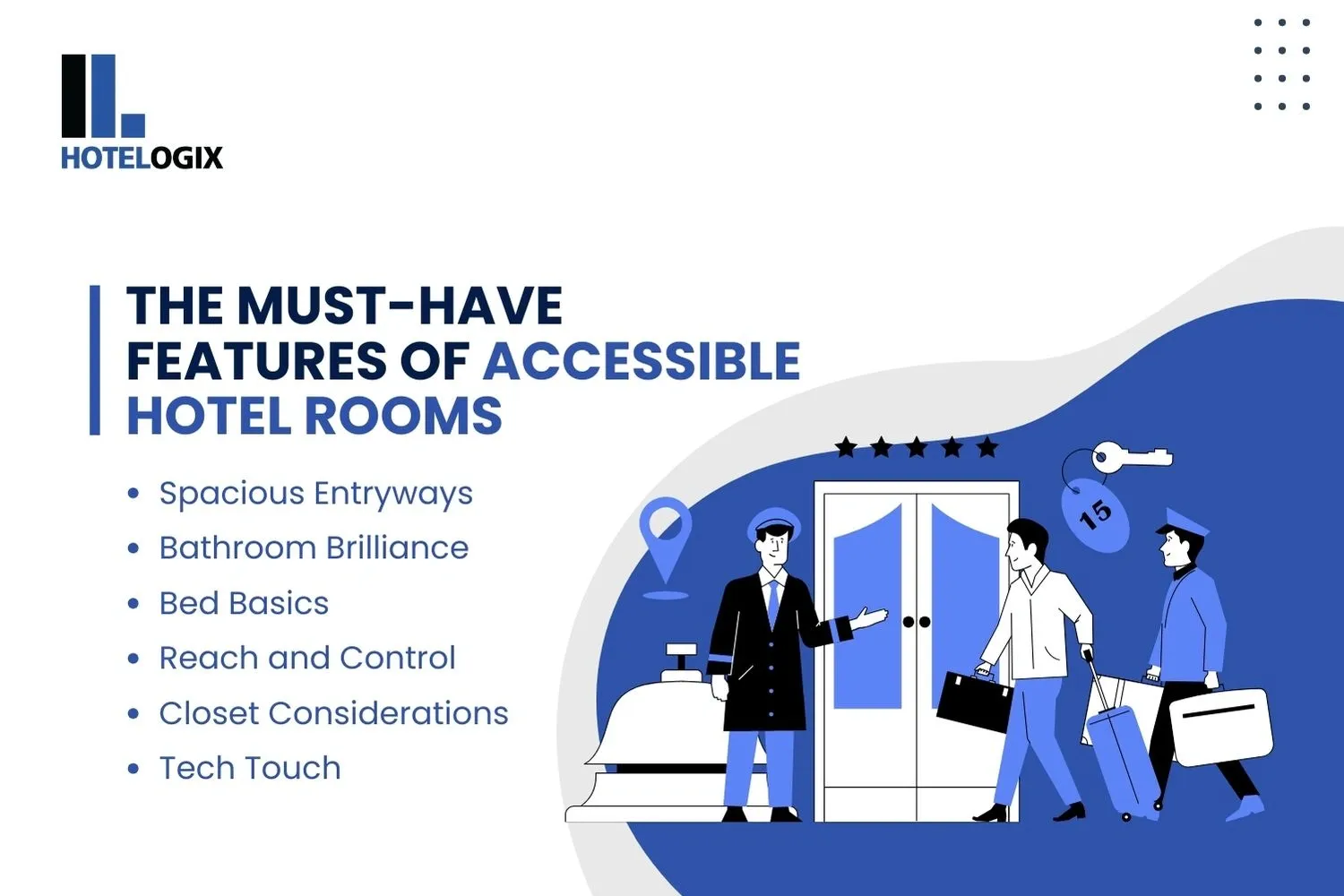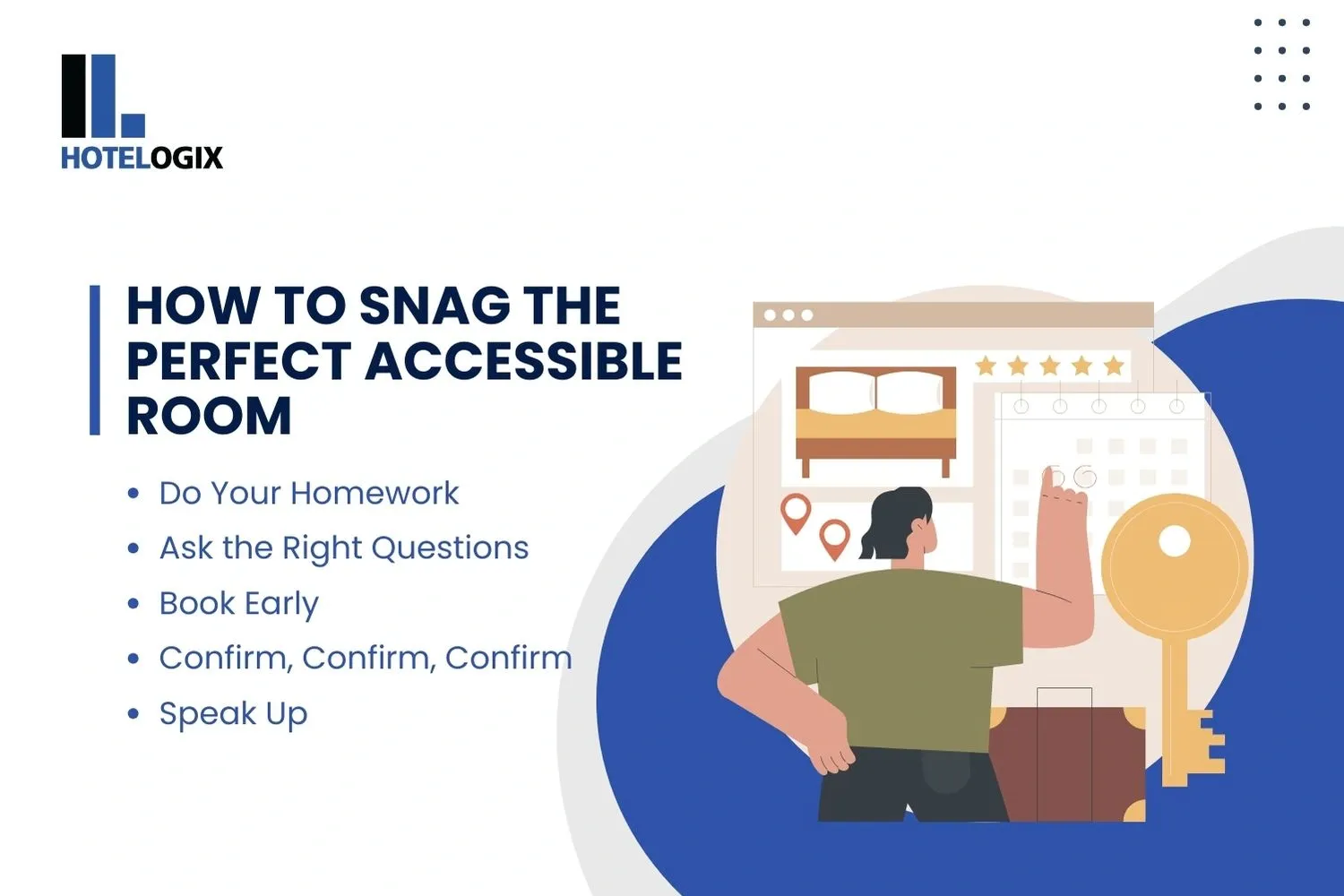Let’s be honest, the hospitality industry has come a long way in recent years, but there’s still room for improvement when it comes to accessibility. We’ve all heard stories of travelers struggling to find suitable accommodations that cater to their unique needs. It’s time we take a real close look at how accessible hotel rooms are revolutionizing the travel experience for everyone.
What Are Accessible Hotel Rooms, Anyway?
Picture this: You’re planning a trip, and you or a loved one has specific mobility requirements. You start searching for hotels, and suddenly you’re bombarded with terms like “ADA compliant” and “wheelchair accessible.” But what does it all mean?
Accessible hotel rooms are specially designed spaces that cater to guests with various disabilities or mobility challenges. These rooms go beyond just being “handicap friendly” – they’re thoughtfully crafted to ensure every traveler can enjoy a comfortable, safe, and independent stay.
In the United States, the Americans with Disabilities Act (ADA) sets the gold standard for accessibility in public accommodations, including hotels. But here’s the kicker – ADA compliance isn’t just a legal checkbox; it’s a commitment to inclusivity that benefits everyone.
The Must-Have Features of Accessible Hotel Rooms

Now, let’s dive into the nitty-gritty of what makes a hotel room truly accessible. It’s not just about wider doorways (although those are crucial). Here’s what you should look for:
- Spacious Entryways: Doorways should be at least 32 inches wide to accommodate wheelchairs comfortably.
- Bathroom Brilliance:
- Roll-in showers with handheld showerheads
- Grab bars strategically placed near toilets and in showers
- Lowered sinks and mirrors
- Bed Basics: Beds at a height that allows easy transfer from a wheelchair
- Reach and Control:
- Lowered light switches, thermostats, and peepholes
- Accessible outlets and charging stations
- Closet Considerations: Lowered closet rods and shelves
- Tech Touch: Visual alarms for the hearing impaired and audio alarms for the visually impaired
But here’s the real game-changer – the best accessible rooms don’t just meet the minimum requirements. They go above and beyond to create a truly welcoming environment.
Why Accessible Rooms Matter
Let’s cut to the chase – accessible hotel rooms aren’t just nice to have; they’re essential. And not just for guests with disabilities. Think about it:
- Families with young children appreciate the extra space and safety features.
- Elderly travelers find the amenities more comfortable and convenient.
- Anyone with a temporary injury can benefit from accessible features.
In other words, accessible rooms are a win-win for everyone. They open up travel opportunities for those who might otherwise stay home and provide unexpected comfort for all guests.
How to Snag the Perfect Accessible Room

Alright, you’re sold on the idea of accessible rooms. But how do you actually book one? Here’s your game plan:
- Do Your Homework: Research hotels known for their accessibility features. Chains like Sleep Inn often have standardized accessible rooms across their properties.
- Ask the Right Questions: Don’t be shy – call the hotel directly and ask about specific features you need. Is there a roll-in shower? How high are the beds?
- Book Early: Accessible rooms are often limited, so reserve as far in advance as possible.
- Confirm, Confirm, Confirm: Double-check your reservation a few days before arrival to ensure you’re assigned the correct room type.
- Speak Up: If something isn’t right when you arrive, don’t hesitate to ask for adjustments or a different room.
According to a 2024 report by Skift, “Nearly 15% of the world’s population lives with a disability, yet fewer than 10% of global hotel listings clearly state accessible room availability.”
Busting Myths: What Accessible Rooms Are
Myth: Accessible rooms are only for people with disabilities.
Reality: Anyone can book and enjoy these rooms!
Myth: Accessible rooms are less luxurious or comfortable.
Reality: Many hotels are upping their game, offering high-end accessible rooms that rival their standard suites.
Myth: All accessible rooms are the same.
Reality: Features can vary widely, so always check the specifics.
Accessibility Around the World
Here’s where things get interesting – accessibility standards can vary dramatically from country to country. While the ADA sets the bar in the U.S., other nations have their own regulations:
- In the UK, the Equality Act 2010 governs accessibility requirements.
- The European Union has been working towards standardized accessibility guidelines across member states.
- Many Asian countries are rapidly improving their accessibility standards, especially in major tourist destinations.
Takeaway: Always research local standards when traveling internationally, and don’t assume that “accessible” means the same thing everywhere.
Making Accessibility Easier with the Right Tech
And when integrated with a channel manager and a Web booking engine, hotels can ensure seamless distribution of accessible room inventory online, eliminating confusion and ensuring the right guests find the right rooms. Not only does this help ensure that guests with specific requirements get the right room, but it also reduces booking errors and enhances the overall guest experience.
In the evolving world of accessible travel, tech-backed precision can make all the difference.
The Future is Accessible: What’s Next for Hotel Rooms?
If there were three words to sum up the future of accessible hotel rooms, they’d be:
We’re talking about:
- Smart room technology that remembers guest preferences and adjusts automatically
- Seamless design that makes accessibility features blend in beautifully
- Virtual reality tours that let guests “try before they buy”
The bottom line? The hospitality industry is waking up to the fact that accessibility isn’t just about compliance – it’s about creating exceptional experiences for every guest.
FAQs About Accessible Hotel Rooms
Q1: How do I know if a hotel room is truly accessible?
A: Always check the hotel’s website and call directly to ask about specific features like roll-in showers, bed heights, or visual alarms. Don't rely solely on online labels.
Q2: Can non-disabled guests book accessible rooms?
A: Yes! These rooms are available to everyone and often offer added convenience and space.
Q3: Are accessible rooms more expensive?
A: Not necessarily. Many hotels price accessible rooms similarly to their standard counterparts, though high-end accessible suites may cost more.
Q4: Can I request additional accessibility equipment?
A: Many hotels offer extra items like shower chairs or visual alert kits upon request. Always inquire in advance.
Q5: How many accessible rooms does a hotel need to offer?
A: In the U.S., the ADA mandates that at least 2% of guest rooms must be accessible. The exact number may vary based on hotel size and location.
Wrapping It Up: Your Call to Accessible Action
Let’s be real – the world of accessible travel is evolving fast, and it’s about time. Whether you’re a traveler with specific needs, a hotelier looking to up your game, or just someone who appreciates good design, accessible hotel rooms are changing the game.
So, next time you’re booking a stay, why not give an accessible room a try? You might just find it’s the most comfortable room you’ve ever stayed in. And if you’re in the hospitality biz, remember this: creating truly accessible spaces isn’t just good karma – it’s good business.
Ready to explore the world of accessible travel?
Start by asking the right questions, demanding the best features, and spreading the word about great accessible experiences. After all, travel should be for everyone – no exceptions.


